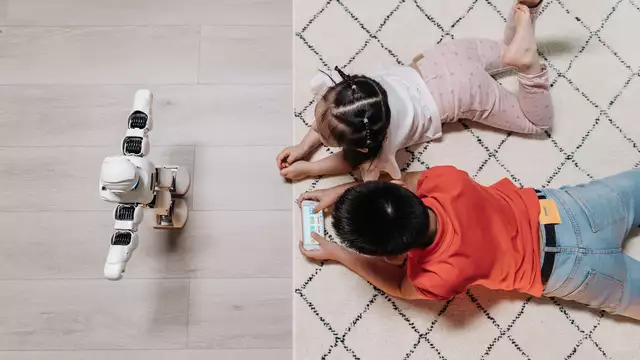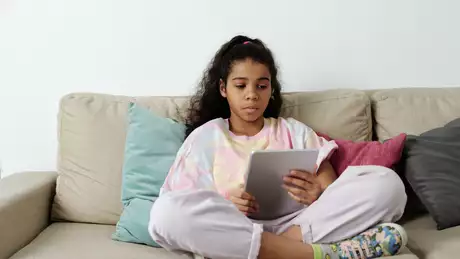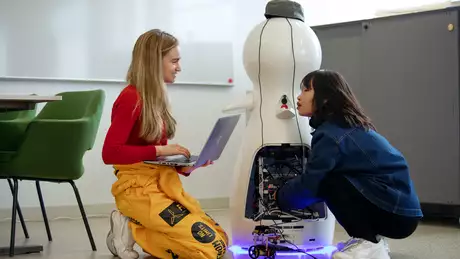
The robot that taught kindergarteners language and problem solving
Published: 12.10.2023 / Fundraising
Once upon a time, there was a society that rapidly digitally transformed. Digital services and tools became an important part of people's lives - in everyday life, work and school. Artificial intelligence came, not just to visit, but to settle down in the society. Who was this new inhabitant and how ethically reliable was it, people asked themselves?
People immediately started looking for answers to the questions raised by the new inhabitant and, as a result, the knowledge about it increased. Over time, society learned to live with artificial intelligence as a helpful neighbour. Eventually, it was time to open the doors for AI into the daycare centres, as the early childhood education plan also was greeted by the possibilities of digitalisation.
Perhaps this is something close to how artificial intelligence would create a fairy tale about how it entered our society. But the fairy tale would not end here – instead it had just begun, as it comes to digitalisation in early childhood education and care.
Arcada's responsibility in the development
The current early childhood education plan states that the staff – together with the children – should include digital tools in play, collaboration, games, experiments and movement. To enable this, Arcada started an interdisciplinary research project on how humanoid robots can be used for this. The goal was to develop models and technical solutions for how algorithms and robots can help support children's learning and facilitate staff work.
Together with engineering and social services experts, Arcada started identifying authentic daycare situations where a child-robot interaction could be implemented. However, before implementation, careful research, development and testing was required.
“We were recently together with the social work students and familiarised ourselves with Arcada's new robots. Initially, we were sceptical and had many questions, such as what ethical aspects we need to consider. We realised that we cannot stop the development, but instead participate and influence it," says Eva Edgren, lecturer in social work.
Technology result of human activity
Furthermore, the early childhood education plan states that the use of digital tools must be safe. The aim is for children to realise, through own experience, that technology is a result of their own human activity.
“Everything in AI should start from us as humans and be seen as a tool. In this case, the tool should help the staff in their work and support the children in their everyday life and learning at the daycare. When the children get to interact with the robot, they learn that it is they who control the robot, and not the other way around," says Edgren.
Before the robots are tested in the everyday life of daycare centres, Arcada’s interdisciplinary research will continue on how humanoid robots can support children in an ethical and sustainable way.
Read previous news about robotics in early childhood education: "Come on kids, let’s play”, says the robot – new Arcada project focuses on child-robot interaction
Photo: Pexels


